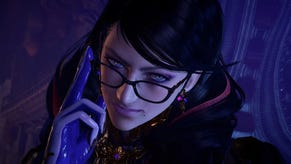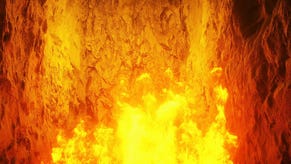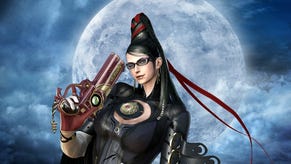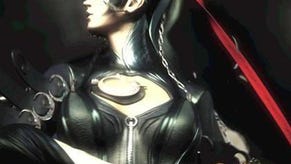Face-Off: Bayonetta
Witch won?
Hold onto your potatoes, because there's no way to sugarcoat this one - Bayonetta is one of the most dramatic Face-Offs we've ever had to do. On Xbox 360, it is a magnificent game, as our import review testifies. On PS3, it looks like an Xbox 360 exclusive that has been dragged unwilling, kicking and screaming across the divide.
Strictly speaking, Bayonetta isn't actually out yet. However, while European gamers can't buy it until 8th January, the game is coming up to its one-month anniversary in Japan, and it's the Far Eastern versions we're covering today. We don't expect wholesale changes on either version of the game to follow, but if the Western release does change significantly we'll make sure to report on it in a follow-up piece.
Back to basics. It's a Face-Off, so what about the assets? As usual, there's an extensive comparison gallery crammed with mostly frame-accurate shots derived from completely lossless HDMI captures, plus of course there's a customary Face-Off video to get your teeth into.
First impressions are that performance is severely impacted in places on PS3 and that graphics have been pared down to boot. All of which seems somewhat at odds with a statement put out by PlatinumGames' Tatsuya Minami. "With Bayonetta, we created the Xbox 360 version of the game first, and then handed off all the data and other assets to SEGA so they could begin the process of porting Bayonetta to the PS3, giving them advice regarding the porting process along the way and overseeing the progress to ensure that the PS3 version would be the best it could be," he wrote.
Later he added: "All involved endeavoured to exploit the specific traits of each console to create an enjoyable experience. We feel the best way to evaluate this is by actually playing the game for yourself and coming to your own conclusions."
Which is exactly what I did, and by all measurable and quantifiable criteria the PS3 version is not all that it could have been. Bayonetta wasn't just developed first on Xbox 360, it was clearly designed to exploit the architectural advantages unique to that platform - the things that a PlayStation 3 port can't duplicate without some very significant performance impediments.
In the original demo analysis, I noted that the PS3 version runs with definite, noticeable and impactful frame-rate penalties, and also pointed out that the content chosen for the Xbox 360 and PS3 demos was not like-for-like. The content omissions can't have been a development issue - the two versions were released simultaneously in Japan - so the suspicion was that SEGA simply didn't want you to see the technologically more challenging elements of the Xbox 360 version at play within the PS3 code.
Bayonetta kicks off with a level called the Falling Clock Tower, a name which only provides a very basic description of the sheer visual majesty to which you are witness. If you've played it in the 360 demo, you'll know that it's very, very special (though it's even better in the full game). It is also completely missing from the respective PS3 sampler, and looking at the final release, it is not difficult to see why. Frame-rate is often running at half the speed of the 360 version and the performance impact, combined with the sheer amount of stuff going on, essentially makes the PS3 version more confusing than playable: you're starved of visual feedback.
While the Falling Clock Tower is one of the worst-performing sections of the PS3 code, it doesn't end there. Throughout the game the gap in performance is colossal, and pretty much unprecedented. To illustrate, it's time for some frame-rate analysis. The first video concentrates on sections that are pretty much synchronised, covering both gameplay and then cut-scenes. Note that on 360 there is a section where 60FPS gameplay transitions into a 30FPS cut-scene, resulting in a pretty sharp rise and drop in the graph.








